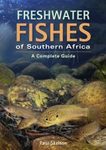About this book
Among all vertebrates, gobies are second in diversity only to the teleost family Cyprinidae. The Gobiidae consists of more than 200 genera and nearly 2,000 species and make up the largest family of marine fishes. Gobies account for as much as 50% of the energy flow in coral reef communities. Their small size, ability to adapt to numerous ecological niches and to be bred in aquaria has led to numerous studies both in the field and laboratory.
Gobies are found from above the high tide line to depths of over 1,100 m. Some species are found only within caves, others deep inside sponges, and some others climb waterfalls to return to their native streams. They vary reproductively from gonochoric to hermaphrodite, monogamy to polygyny and promiscuity, some have short life spans and reproduce only once while others have longer life spans reproducing one or more times per year.
This volume, written by over 30 experts from 15 countries, summarizes what is known about the systematics, ecology, zoogeography, and general biology of the Gobiiformes.
Contents
SECTION 1: SYSTEMATICS
A History of Gobioid Morphological Systematics: James L. Van Tassell, Luke Tornabene and Michael S. Taylor
Molecular Systematics of Gobioid Fishes: Lukas R#ber and Ainhoa Agorreta
Systematics of Rhyacichthyidae: Helen K. Larson
Systematics of Odontobutidae: Akihisa lwata
Systematics of Butidaeand Eleotridae: Christine Thacker
Systematics of Gobionellidae: Frank Pezold
Systematics of Oxudercinae: Edward Murdy
Systematics of Amblyopinae: Edward Murdy
Systematics of Sicydiinae: Philippe Keith and Clara Lord
Systematics of Gobiidae: Christine Thackekr
SECTION 2: ZOOGEOGRAPHY
Gobiidae of the Americas: James L. Van Tassell
North-eastern Atlantic and Mediterranean Gobies: Marcelo Kovacic and Robert A. Patzner
Diversity and Distribution of Marine, Euryhaline and Amphidromous Gobies fromWestern, Central and Southern Africa: Ulrich K. Schliewen
The Marine Temperate Gobioids of Southern Australia and the New Zealand Region: Helen K. Larson
Tropical Freshwater Gobies: Amphidromy as a Life Cycle: Philippe Keith and Clara Lord
Diversity and Distribution of Freshwater Gobies from the Mediterranean, the Black and Caspian Seas: J#rg Freyhof
SECTION 3: GENERAL BIOLOGY
Gobies as Predator and Prey: C. Dieter Zander
Morphological Adaptations to Special Environments of Gobies: C. Dieter Zander
Morphological Organization and Variability of the Reproductive Apparatus in Gobies: Carlotta Mazzoldi Robert A. Patzner and Maria B. Rasotto
Early Development of Gobies: Rita Borges; Cludia Faria; Ftima Gil and Emanuel J. Gon#alves
SECTION 4: ECOLOGY
Planktonic and Paedomorphic Gobioids: Mario La Mesa
Gobies on Coral Reefs: Juergen Herler Philip L. Munday and Vanessa Hernaman
Gobies as Cleaners: Isabelle M. C#te and Marta C. Soares
The Partnership between Gobiid Fishes and Burrowing Alpheid Shrimps: Ilan Karplus and Andrew Richard Thompson
Mudskippers: Front Runners in the Modern Invasion of Land: Atsushi Ishimatsu and Tomas T. Gonzales
Customer Reviews


































